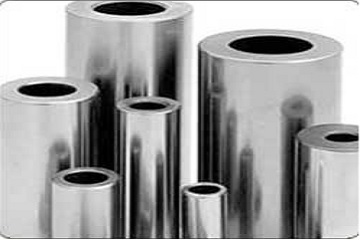Superalloys are high-performance heat-resistant alloys. It has the great ability to work under high temperatures. They have excellent strength, high resistivity against thermal creep, high surface stability, and resistivity against corrosion.
Superalloy improvement has depended vigorously on both chemical and process innovations. Superalloys grow high-temperature strength through strong arrangement fortifying and precipitation reinforcing from optional stage accelerates, for example, gamma prime and carbides. Oxidation or erosion opposition is given by components like aluminum and chromium. Superalloys are regularly given a role as a solitary precious stone—while grain limits may give strength at low temperatures, they decline creep resistance.

Superalloys intended to work at a high melting point which is above 650 °C. These are high-performance alloy which has high strength, stability, and corrosion and oxidation resistance
Table of Contents
Type of Superalloys
There are three types of superalloys
- Nickel-based superalloys
- Cobalt-based superalloys
- Iron-based superalloys
1. Nickel-based superalloys
Nickel-based superalloys presently establish more than half of the weight of advanced aircraft engines. Nickel-base superalloys incorporate strong arrangement fortified compounds and age-hardenable composites. Age-hardenable combinations comprise of an austenitic (fcc) lattice scattered with rational precipitation of a Ni3(Al, Ti) intermetallic with an fcc structure. Ni-based superalloys are combinations with nickel as the essential alloying component are liked as edge material in the recently examined applications, rather than Co-or Fe-based superalloys. What is huge for Ni-based superalloys is their high strength, creep, and erosion obstruction at high temperatures. It is normal to project turbine sharp edges in directionally hardened structures or single-gem structures. Single-crystal blades are basically utilized in the principal row in the turbine stage.
2. Cobalt-based superalloys
This class of combinations is generally new. In 2006, Sato et al. found another stage in the Co-Al-W framework. Not at all like other superalloys, cobalt-base combinations are described by a strong arrangement reinforced austenitic (fcc) framework in which a little amount of carbide is dispersed. While not utilized industrially to the degree of Ni-based superalloys, alloying components found in research Co-based compounds are C, Cr, W, Ni, Ti, Al, Ir, and Ta. They have better weldability and warm weakness opposition when contrasted with nickel-based composite. Besides, they have phenomenal consumption opposition at high temperatures (980-1100 °C) in light of their higher chromium substance.
3. Iron-based superalloys
Fe-based superalloys have shown creep and oxidation obstruction like that of Ni-based superalloys while being undeniably more affordable to deliver. The main class of this gathering is those combinations that are reinforced by intermetallic compound precipitation in an FCC framework.
Application:
Superalloys are widely used in aerospace and marine engines. Nickel-based superalloys are used in load-bearing structures. Steel rods in solar thermal power plants contain superalloys. Superalloys are also used in heat exchangers for nuclear reactor systems.
